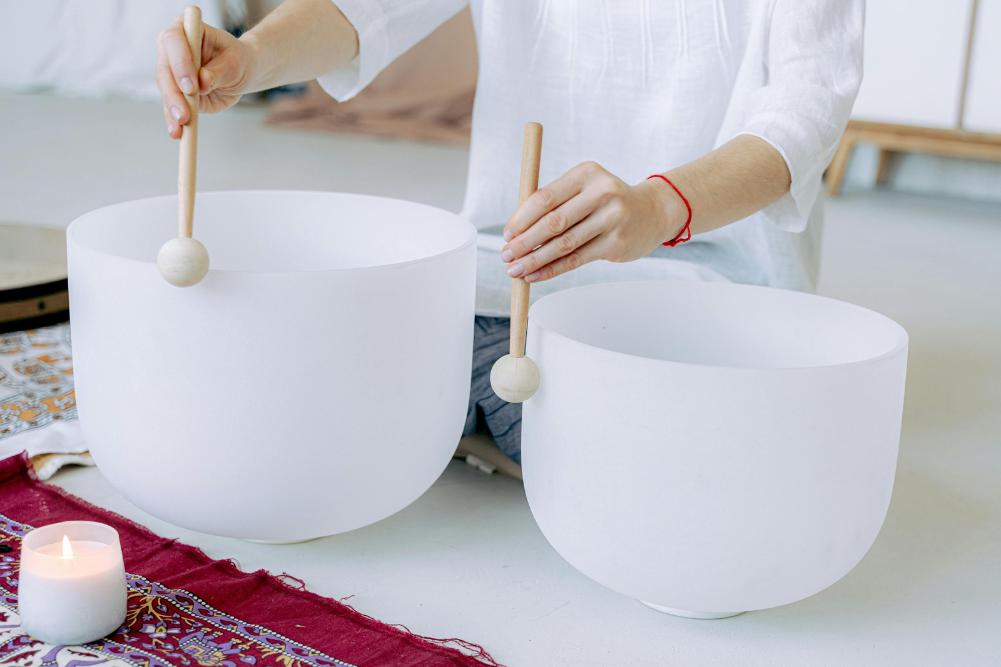How to tap into your creativity
While we most often associate creativity with artistic pursuits such as painting, music or writing, creativity also includes your ability to solve problems. After all, creativity is what scientists are using when they create new ways to conquer the diseases that plague us; it’s what engineers use to rethink the way our cities and roads are built; and it’s what a teacher will tap into to help a child for whom the usual cues for learning don’t work.
Creativity is a way of thinking that allows you to move past traditional modes of doing things or solving problems to come up with something new and innovative. It can be complex or exceedingly simple and often applies what already exists in novel ways. Indeed, when it comes to approaching personal and professional problems it is your creativity that will determine how successful, content and confident you are.
At its heart, creativity is a method of reaching your goals, large and small. It’s a tool you can use to help you overcome the obstacles that have previously blocked you and help you rethink what it is you know and understand about yourself. It can help you define what is most important to you so your energies are directed properly and most usefully. Creativity, when unleashed, can completely transform your life, clearing your path to an exciting future.
So why don’t we all tap into our creativity naturally? Unfortunately, many of us have ideas about creativity that stifle our ability to tap into it, that block our minds to the well of creativity that exists within. The most common belief is that creativity is for a chosen few, those special individuals who change the world in important ways. We often believe you are either born creative or not, that some of us are simply best suited to conformity and a “pale” life. Creativity, though, is a way of thinking and not something we can’t learn, so shrug off the weight of what you think you can’t do and begin to believe creativity is as much yours as anyone else’s.
Similarly, another problem we often come up against is the habits of our minds. The brain is generally wired to feel comfortable with patterns, with information that is consistent with what we already believe and think. This stifles creativity, which requires us to open our perceptive thought, to see things differently and to reserve judgement until ideas are more fully formed rather than shut them down before they have been birthed. Creative thinkers, then, turn ideas on their heads, look at problems from a variety of angles and try the seemingly silly or strange to see if it just might work.
So how do you begin to tap into your creativity? There’s a variety of ways in which you can stimulate your creative juices, from visual stimulus to retraining your brain; each has its own set of benefits and may suit different situations. Ultimately, though, once you start to think more creatively, new mind habits are formed, making the effort required for creative thought lessen over time.
Intentions
Experimental social psychologists have conducted numerous experiments that demonstrate behaviour and performance can be stimulated by showing individuals certain objects and pictures. For example, one study primed participants with pictures associated with business (briefcases, pens, pictures of people dressed in business clothes etc), which resulted in them becoming more competitive. Another social psychologist, Michael Slepian from Tufts University, noticed that during a study on “bright ideas” participants became more insightful and creative when they were primed with a simple exposed lightbulb.
At home you can stimulate your own creativity through the use of an intention board. This is a board on which you display images, sayings, articles, poems and other items that represent what you want to create or who you want to become. By placing your intention board somewhere you’ll see it often you’ll stimulate your subconscious to work on ways to achieve your goals. Once you’ve decided on a course of action and begun to implement it, the intention board becomes a tool for keeping yourself motivated as you move down the path toward your goals.
Dream
While many of us imagine our daydreams are simply fantasies that will never come true, you can use the process of daydreaming to trigger creative thought. Daydreams are simply an inner world where you are able to rehearse the future and imagine adventures without risk. This process allows the mind to roam freely, aiding creativity — but only if you pay attention to the content of your daydreams and act on what you have learned.
In effect, daydreaming may be a more creative state than when you actively focus and methodically reason through a problem because the unfocused mind allows new ideas and different, unexpected associations between ideas to occur. Neuroscientists have identified this process as the brain’s “default network” — a web of brain regions that become active when you mentally drift away from the task at hand and into your own little world. To use daydreaming to boost creativity, though, you need to maintain enough awareness to recognise a good idea or a solution to a problem when you come across it so you can develop it further and implement it.
Lateral thinking
This is a term coined by the father of creativity, Edward de Bono, and it’s a way of stepping sideways from your usual patterns of thinking. The Concise Oxford Dictionary defines it as: “seeking to solve problems by unorthodox or apparently illogical methods”, which requires a willingness to suspend judgement or self-censorship and break free from habitual processes of thinking.
When you think laterally, you attempt to work on a problem by trying different perceptions, different concepts and different ways into the problem. It’s about actively and consciously breaking away from logical thinking strategies to become less constrained by traditional modes of thought and problem solving. An example of a typical lateral thinking question is this one: There are six eggs in the basket. Six people each take one of the eggs. How can it be that one egg is left in the basket? The answer? The last person takes the basket with the egg still in it.
There’s a multitude of lateral thinking exercises and puzzles online and in books to help you to train your mind to approach problems differently. Essentially, with practice, you will break free of your usual problem-solving strategies and begin to find answers to issues that may have plagued you for years.
Puzzles
It’s worth noting that creative solutions don’t often come in one hit. Instead, moments of insight give you one part of the puzzle, one piece of the complete answer. The trick in using creativity is to keep all the pieces until you can put them together. This may mean holding onto ideas or notions that seem out of place or that don’t mean anything yet — like a writer who keeps hundreds of slips of paper with words, phrases and ideas bringing them finally together into a crafted novel.
Of course, not all ideas will bear fruit and there will come a time to cull and dispose of those ideas that aren’t useful. It is knowing what to give up and what to pursue that brings good ideas to the fore and makes things happen.
Perception
Your sense of perception is the way in which you become aware of the world around you. It is one of the brain’s two primary functions, the other being the way in which you determine how you act in response to what you perceive.
The way you perceive the world is influenced by your past experiences as well as your beliefs and expectations, which is why everyone’s perception of reality is different and why it is such a purely subjective experience. Because of this subjectivity, it is your perception that often needs to be altered in order to fully tap into your creativity. This is because creativity relies on open-mindedness and a propensity to keep judgments in reserve.
Instead of open-mindedness, though, we mostly see, hear and perceive the things that back up what we already think we know about the world — good and bad. This inhibits creativity because it promotes habitual thinking and responses while blocking your mind to unique opportunities and moments that can change your life. So how do you change your perceptions if they are so ingrained?
Conscious effort is required to change a lifetime of viewing the world as you do. It is about trying to see the world from a different perspective — from someone else’s point of view — by asking yourself different kinds of questions about a familiar problem, by throwing yourself a curve ball, by taking a risk or by introducing opposites to a situation. Essentially, to change your perceptions, your usual way of seeing the world, you need to become aware of your normal patterns and responses and make an effort to do something different.
Passion
It’s very difficult to spend time and energy on something you are not passionate about or do not have a vested interest in. Whether solving a problem in your relationship, your career, your home or a hobby, whether you want to make the world a better place or solve a daily hassle that affects most of us, passion is the key to inspiring you to put in the hard work needed to become creative and pursue your ideas.
Unfortunately, many of us are put off by the stop-start efforts of our past, where we began with avid enthusiasm only to have it wane and die before we had accomplished anything. So how do you differentiate a passion from a passing interest? A passion is something that has always niggled at the back of your mind, something you have come back to in some way time and time again. It is a topic you seek out information on regularly, that you light up about when you talk on it, that you are tuned in to on some level all the time.
Your passions fire you up, change your posture, your tone of voice, the way you move and articulate yourself. They make you feel confident when you speak about them; you feel enlivened and altered. Thinking about the times in your life when this has been the way you felt may give up some surprising information but it is not uncommon to be a little afraid of pursuing the things you feel deeply about. Fear of failure is even more acute when it’s something you care deeply about achieving.
Share and borrow
Creativity doesn’t happen in a vacuum. Indeed, many of the most amazing ideas have come from someone else’s errors, half-achieved dreams, an idea appropriated from an entirely different situation and collaboration. Sharing your ideas and borrowing and evolving those of others are crucial to the process of creativity. This allows you to create without having to reinvent the wheel and it also means that you can benefit from the experiences and input of others.
Being aware of what is happening around you, sharing your passions and inviting comment and advice, and keeping alert to opportunities everywhere will stand you in good stead when it comes to building your creative flair. Creation and creativity can be a lonely process where we imagine we are the only one to have a certain kind of problem, but communicating with those around us and those we meet can prove to be invaluable in offering clues to how we might succeed.
Creativity is crucial to a happy, productive life. It is about taking risks, looking at the world with new eyes and then reaping the vast rewards of this new way of being in your career, relationships and sense of self.







